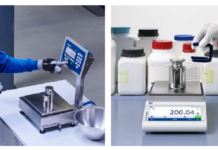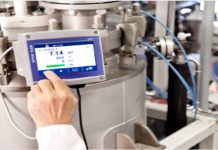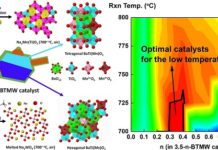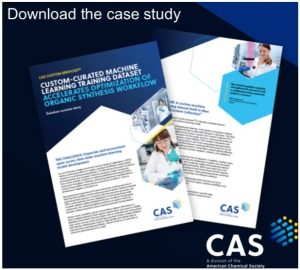CO2 as a feedstock for petrochemicals is the Holy Grail that is engaging and exciting the global scientific community. Many approaches are being attempted towards this extremely challenging goal. A breakthrough appears years away, but holds the promise of greening the petrochemical production.
CO2 as Feedstock
T
he petrochemical industry, a cornerstone of modern society, has traditionally relied on fossil fuels as its primary feedstock. The environmental implications of this reliance have prompted a global search for alternative, sustainable sources. Carbon dioxide, a major greenhouse gas, has emerged as a potential candidate, offering the intriguing prospect of a circular carbon economy. However, transforming this abundant yet recalcitrant molecule into valuable petrochemicals presents a formidable challenge.
Carbon Footprint
To understand the significance of this transition, it is essential to recognise the petrochemical industry’s gigantic carbon footprint. The production of ethylene and propylene, the foundational building blocks for plastics, fibres, and countless other products, is energy-intensive and heavily reliant on fossil fuels. Natural gas and naphtha, hydrocarbon-rich feedstocks, are subjected to high temperatures and pressures in processes like steam cracking to yield these olefins. 40-50% of the carbon embedded in these feedstocks is released into the atmosphere as carbon dioxide.
The concept of utilising carbon dioxide as a chemical feedstock is inherently appealing. It offers the prospect of converting a waste product into valuable commodities, thereby closing the carbon loop. Moreover, it aligns with the growing emphasis on carbon capture, utilisation, and storage (CCUS) technologies. By transforming carbon dioxide into products, we can potentially mitigate greenhouse gas emissions and create a more sustainable chemical industry.
Global Warming
Climate change, primarily driven by greenhouse gas emissions, is among the most pressing challenges humanity faces today. Atmospheric concentration of carbon dioxide has been rapidly increasing since measurements began in March 1958, averaging an annual rise of about 2 ppm over the past decade. In 2016, atmospheric carbon dioxide levels remained above the symbolic 400 ppm threshold throughout the year for the first time, representing a 30% increase from pre-industrial levels of 270 ppm. The Paris Agreement, adopted in 2015 under the United Nations Framework Convention on Climate Change, highlights global efforts to reduce greenhouse gas emissions to mitigate global warming. Achieving these goals will require a significant increase in public and private investments in research and development.
Mitigation Strategies
Strategies for reducing carbon dioxide emissions fall into four main categories: improving energy efficiency, using non- or low-carbon energy sources, Carbon Capture and Sequestration (CCS), and Carbon Capture and Utilisation (CCU). Improving energy efficiency offers the greatest return on investment and has already been successfully implemented in various industrial contexts. However, annual improvements of 1–2% are insufficient to meet climate targets. Using non- or low-carbon energy sources (e.g., solar, wind, geothermal) on a large scale is challenging due to the fluctuating nature of energy supply and the slow transition to renewable electricity production.
CCS
CCS involves capturing carbon dioxide from large point sources such as power plants, transporting it to a storage site, and sequestering it into a natural or artificial sink. Despite its potential, CCS is currently limited by technical and economic challenges. CCU, which converts carbon dioxide into high-value products, is a specialised form of CCS where the utilisation part acts as a non-natural sink. Converting carbon dioxide, a thermodynamically stable molecule, requires substantial energy input along with effective reaction conditions and active catalysts.
Carbon dioxide is often used directly for enhanced oil recovery and in food and carbonated beverages. It has been used for manufacture of salicylic acid in a process that goes back to the early 19th C and in the manufacture of urea since the 1920s. But now researchers are actively engaged in exploring routes for transforming carbon dioxide into a feedstock for manufacturing petrochemicals on a large scale.
Stable Molecule
CO2 is the end product of combustion and oxidation of carbon-containing compounds. As a result, it is thermodynamically very stable. CO2 consists of one carbon atom doubly bonded to two oxygen atoms (O=C=O). These carbon-oxygen double bonds are very strong and a significant amount of energy is required to break them. Processes for manufacturing petrochemicals rely on reactive carbon sources like hydrocarbons that are easier to transform than carbon dioxide. Conversion of carbon dioxide to useful petrochemicals requires substantial inputs of energy to drive the reactions up the thermodynamic hill. Catalysts are required to push reactions to proceed that would otherwise never take place. They function by lowering the energy barrier for the reaction – activation energy.
Catalytic Processes
A huge chunk of research is focused on the development of catalysts capable of directly converting carbon dioxide into hydrocarbons. Researchers have explored a variety of catalysts, including metal oxides, zeolites, and homogeneous catalysts. One notable example is the work of researchers at the University of Illinois at Chicago, who developed a copper-based catalyst that can convert carbon dioxide into methanol with high selectivity. While methanol is not a direct petrochemical building block, it can serve as a platform chemical for the production of ethylene and other hydrocarbons. Catalyst development remains a critical area of research. Catalysts with high activity, selectivity, and stability are essential for commercial-scale conversion of carbon dioxide. Additionally, scaling up laboratory-scale processes to industrial production levels presents engineering challenges.
Electrochemical Reduction
Reducing carbon dioxide in an electrochemical cell offers distinct advantages over thermal methods. Electrochemical reduction has the potential for a smaller carbon footprint since it can be powered by renewable electricity sources like wind and solar, which are rapidly expanding and becoming more cost-effective. Unlike thermal reactors, which typically require high temperatures and pressures to reduce carbon dioxide by reacting it with hydrogen, electrochemical cells usually operate at room temperature and atmospheric pressure. However, the challenge with electro reduction lies in its low energy efficiency and limited control over the chemical reactions, making large-scale industrial application still years away. For instance, the energy efficiency of electro reduction for producing ethylene is currently around 25%, but for commercial viability, it needs to reach 50–60%.
Biological Conversion
Nature offers inspiration for carbon dioxide conversion. Microorganisms have evolved sophisticated pathways to incorporate carbon into organic molecules. Scientists are harnessing this capability through metabolic engineering to create microorganisms capable of producing petrochemical precursors. Researchers have engineered cyanobacteria to produce isoprene, a key building block for synthetic rubber. While still in its early stages, this approach holds promise for developing biological platforms for CO2-based chemical production.
Epilogue
Despite these advances, significant challenges persist. The energy required to convert carbon dioxide into useful precursors is considerable, and developing efficient and renewable energy sources is crucial. Moreover, the low concentration of carbon dioxide in the atmosphere necessitates efficient capture and purification processes, adding to the overall cost and complexity. While the direct conversion of carbon dioxide into ethylene and propylene is currently not commercially viable, it represents a promising long-term goal. A successful transition to CO2-based petrochemical production can contribute to a low-carbon economy, create new economic opportunities, and reduce dependence on fossil fuels. Continued research and development, coupled with supportive policies, are essential to accelerate progress in this field.
Readers’ responses may be sent to: k.sahasranaman@gmail.com or chemindigest@gmail.com
































